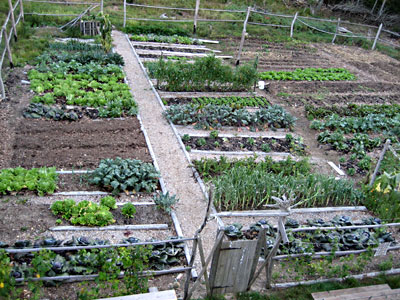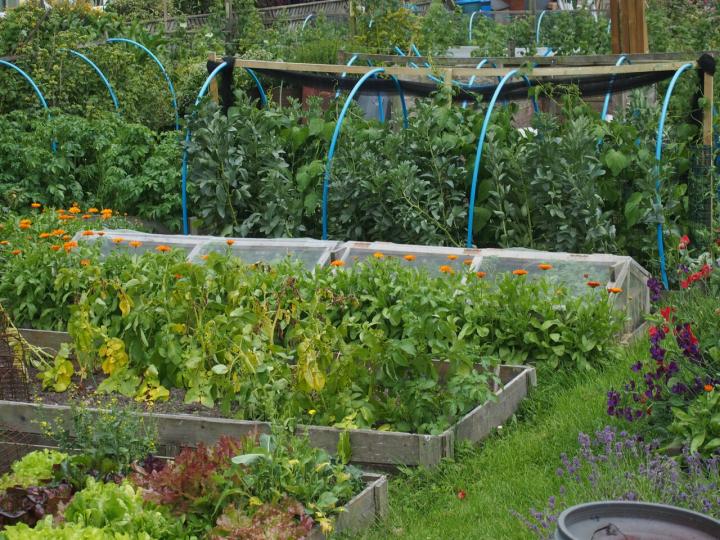How to Reduce Grocery Bills with Homestead Gardening
How to Reduce Grocery Bills with Homestead Gardening
Blog Article
Discover Necessary Tips for Effective Gardening Techniques and Practices
By prioritizing important elements such as dirt wellness, efficient watering strategies, and ideal plant choice, garden enthusiasts can produce a flourishing community that sustains lively growth. Many fanatics neglect crucial information that can make or damage their gardening success-- exploring these forgot elements might expose the key to growing a flourishing yard.
Recognizing Soil Health
Dirt health is a basic aspect of effective gardening, as it straight influences plant growth, nutrient availability, and environment balance. Healthy and balanced soil is identified by a rich biodiversity of microbes, organic issue, and a well balanced pH degree, which together create an atmosphere for plant growth.
To understand dirt health, one must consider its physical, chemical, and organic homes. The appearance and structure of dirt affect its capability to preserve moisture and nutrients, while the chemical structure establishes the schedule of vital components like potassium, phosphorus, and nitrogen. Regular soil screening is critical to evaluate these aspects, permitting garden enthusiasts to make educated choices pertaining to fertilizers and changes.
In addition, advertising organic activity within the dirt is vital for preserving its health and wellness. Practices such as composting, plant rotation, and using cover crops can enhance microbial diversity, improve nutrient cycling, and decrease soil erosion. By prioritizing soil health and wellness, garden enthusiasts not only enhance plant development yet additionally add to a lasting ecosystem, ensuring that their gardening techniques are environmentally liable and resistant over time.
Reliable Sprinkling Strategies
Making sure that plants get the proper quantity of water is vital for their health and wellness and development, especially when combined with a solid structure of dirt health and wellness (Homestead Gardening). Efficient watering strategies can significantly impact plant vigor, lowering water wastefulness and promoting optimal growth
One basic approach is deep watering, which motivates roots to expand deeper right into the soil, boosting drought resistance. This strategy usually involves sprinkling less regularly however in bigger quantities, permitting wetness to pass through the root area thoroughly. Timing is additionally important; early morning is the suitable time to water, as it reduces dissipation and allows vegetation to completely dry throughout the day, lowering disease threats.
Additionally, using mulch can assist preserve soil wetness and manage temperature, additional aiding effective sprinkling practices. Using a drip watering system can additionally offer targeted dampness straight to the roots, making sure that water gets to where it's most required while conserving sources.
Monitoring rainfall and dirt dampness levels can direct modifications in your watering timetable, ensuring plants receive constant hydration without over-saturation. By taking on these effective watering methods, gardeners can promote a growing environment for their plants to thrive.
Plant Choice and Placement
Exactly how can the appropriate plant selection and tactical placement transform a garden into a growing environment? The harmony in between plant selections and their positioning is critical for creating a vibrant garden. When selecting plants, consider elements such as climate, soil type, and sunshine direct exposure. Native species are typically the very best option as they are adjusted to local problems and need less maintenance.
Strategic positioning involves preparing plants according to their development practices and requirements. Taller plants should be placed at the rear of boundaries to prevent shielding much shorter plants. In addition, organizing plants with similar water and light needs can enhance their growth and lower competitors for sources.
Incorporating a variety of plants not just adds visual charm yet additionally advertises biodiversity, drawing in advantageous insects and pollinators. Take into go to these guys consideration the seasonal adjustments in your garden; choose a mix of perennials, annuals, and evergreens to ensure year-round interest.
Finally, keep in mind to evaluate the mature size of plants before planting to stay clear of overcrowding and ensure appropriate air circulation. Thoughtful plant choice and strategic positioning produce an unified atmosphere, permitting your garden to prosper while reducing obstacles.
Pest and Illness Monitoring
Reliable insect and condition management is crucial for maintaining a healthy and balanced yard community - Homestead Gardening. A positive approach, combining social, biological, and chemical methods, can significantly decrease the effect of parasites and diseases on your plants

Biological controls, such as introducing useful bugs like ladybugs or predative termites, can maintain parasite populaces in check without damaging the setting. Additionally, maintaining plant health and wellness with appropriate watering, fertilization, and pruning will bolster their resilience versus illness.
When treatment is essential, decide for targeted chemical therapies, making certain to adhere to application standards to lessen damage to non-target organisms. Always focus on lasting practices, as they advertise long-term yard health and wellness and eco-friendly equilibrium. By incorporating these strategies, gardeners can properly manage illness and parasites, making certain prospering plants and an efficient yard.

Seasonal Upkeep Practices
In springtime, focus on dirt preparation by screening pH levels and including needed changes. Routinely inspect arising plants for diseases and parasites.
As summertime strategies, guarantee adequate watering while keeping track of for indicators of tension or disease. Trim back overgrown plants to motivate air blood circulation and decrease moisture around foliage. This method not just enhances plant health and wellness but likewise advertises flowering and fruiting.
With the arrival of fall, it's time to prepare for winter season. Tidy up dropped leaves and debris to stop pest invasions, and take into consideration planting cover crops to enhance dirt health. This season is additionally optimal for separating perennials and growing spring-flowering bulbs.
Final Thought
Effective gardening rest on the integration of sound methods in dirt wellness, watering, plant option, pest administration, and seasonal maintenance. By prioritizing soil screening and microbial variety, using reliable watering techniques, and choosing proper plants, garden Continued enthusiasts can develop growing ecosystems. Furthermore, aggressive parasite monitoring and diligent seasonal upkeep contribute significantly to overall garden vitality. Embracing these techniques fosters a sustainable and productive gardening environment, guaranteeing thriving growth and resilience throughout the changing periods.
By prioritizing vital aspects such as see post soil health and wellness, reliable sprinkling techniques, and suitable plant selection, garden enthusiasts can produce a flourishing community that sustains vivid development. By prioritizing dirt health and wellness, gardeners not just enhance plant development however likewise contribute to a lasting community, ensuring that their horticulture practices are eco accountable and resilient over time.
Taller plants ought to be placed at the back of borders to prevent shielding shorter plants. Tidy up dropped leaves and debris to protect against insect problems, and think about growing cover crops to improve soil health and wellness.Successful gardening hinges on the assimilation of sound techniques in soil health and wellness, watering, plant selection, insect monitoring, and seasonal maintenance.
Report this page